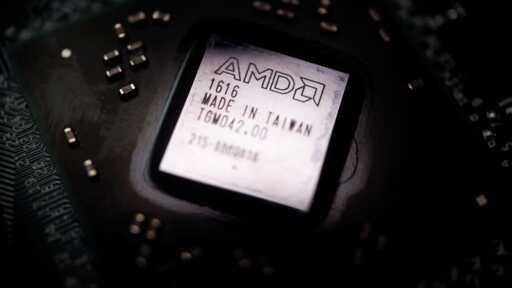Why Smart Uniform Systems Are Essential for Manufacturing Plants
-
The Growing Complexity of Manufacturing Operations
Manufacturing plants are no longer simple assembly lines. Modern operations involve intricate logistics, compliance mandates, and a rotating workforce that demands efficiency and precision. With these growing complexities, uniform management has become a critical concern. Providing clean, safe, and ready-to-use uniforms at the right time and place is no longer a luxury—it's a necessity. Companies are under increasing pressure to maintain hygiene standards, ensure worker safety, and streamline operational workflows.
Traditional Uniform Management: A Ticking Time Bomb
Many manufacturers still rely on manual or semi-automated systems for managing uniforms. These systems are prone to human error, delays, and inefficiencies. Uniforms may go missing, get mixed up, or fail to meet cleanliness standards, leading to non-compliance issues and employee dissatisfaction. Moreover, the administrative burden of tracking inventory, issuing garments, and managing laundry schedules is considerable. In high-risk environments like food processing or chemical manufacturing, such lapses can have serious consequences.
Enter Smart Uniform Management Systems
Smart uniform systems revolutionize this landscape by automating distribution, collection, and inventory tracking processes. These systems use advanced technologies like RFID, barcode scanning, and cloud-based software to manage uniforms seamlessly. Employees can easily check in and check out uniforms through self-service kiosks or smart lockers, eliminating the need for manual oversight. This not only reduces labor costs but also enhances accountability and efficiency. One such innovation is the uniform management system, which integrates seamlessly into existing workflows and ensures real-time monitoring of uniform usage.
Enhanced Safety and Hygiene Standards
Safety is paramount in manufacturing environments. Workers are often exposed to hazardous materials or high-risk machinery, making it crucial that uniforms meet strict safety standards. Smart systems can track the number of washes a uniform has undergone, alerting managers when it's time for replacement. They can also ensure that garments meet cleanliness benchmarks before being reissued. By minimizing human error and enforcing strict protocols, these systems help maintain a safer workplace.
Inventory Control Without the Headaches
One of the major pain points in uniform management is keeping track of inventory. Manual counts are time-consuming and often inaccurate, leading to shortages or overstocking. Smart systems offer precise laundry inventory management capabilities, allowing real-time tracking of every item. Managers can monitor usage patterns, predict demand, and schedule laundering more effectively. This data-driven approach helps reduce waste and ensures that resources are optimally allocated.
Boosting Employee Satisfaction and Productivity
A seamless uniform experience significantly boosts employee morale. When workers can quickly access clean, properly fitting uniforms without delays, their day starts on a positive note. Reduced wait times and fewer uniform-related issues translate to higher productivity and lower absenteeism. Smart systems also support personalized uniform allocations, making employees feel more valued and reducing the likelihood of complaints or disputes.
Environmental and Cost Benefits
Sustainability is becoming increasingly important in manufacturing. Smart uniform systems contribute to green initiatives by reducing water and energy consumption in laundry operations. Efficient inventory management also minimizes unnecessary garment production and waste. Financially, companies benefit from lower operational costs, reduced labor, and extended garment lifespans. These savings make a compelling case for adopting advanced uniform management technologies.
Integration with Broader Facility Management Systems
Modern manufacturing plants often use integrated software solutions to manage various aspects of operations, from production scheduling to asset tracking. Smart uniform systems can be integrated with these broader platforms, offering a holistic view of facility operations. This integration enhances data visibility and enables better decision-making, helping companies stay competitive in a fast-evolving landscape. Solutions like uniform management software provide this kind of interoperability, making them ideal for large-scale implementations.
Scalability for Growing Operations
As manufacturing facilities expand or diversify, their uniform needs evolve. Smart systems offer the flexibility to scale effortlessly, accommodating new departments, shifts, or locations without major infrastructure changes. Cloud-based management tools and modular hardware solutions make it easy to adapt the system as needs change. This scalability ensures that the benefits of automation continue to grow with the organization.
Preparing for the Future of Manufacturing
The shift toward Industry 4.0 demands that every aspect of manufacturing, including uniform management, be digitized and optimized. Smart uniform systems are not just a convenience—they are a strategic asset. They provide the transparency, efficiency, and adaptability required to thrive in a competitive market. By investing in these technologies now, manufacturers can future-proof their operations and gain a significant edge.
Conclusion
Smart uniform systems are redefining operational efficiency in manufacturing plants. They address critical issues such as safety, compliance, inventory management, and employee satisfaction while offering cost savings and environmental benefits. With the ability to integrate with broader facility systems and scale with growing needs, these technologies are no longer optional—they're essential for modern manufacturing success.






